-

-
+ 233 307 085 000
tema port expansion project
MPS is propelling Tema Port into a new era with an unprecedented expansion endeavour, marking a milestone in the sub-Saharan African port industry. This ambitious project entails the construction of a breakwater and an access channel, creating deep-water berths capable of accommodating larger vessels equipped with advanced port handling technology. The Tema Port Expansion initiative is meticulously crafted to deliver world-class harbour infrastructure that will serve as a beacon of maritime excellence for the next century. |
Our Commitment
As the Project Management Team, we are deeply rooted in MPS’s fundamental values, recognising the utmost importance of human life and the preservation of health, safety, security, and well-being. It is our unwavering commitment to foster an Incident & Injury-Free Culture throughout our project. Through our dedication, ownership, and accountability, we pledge to uphold the highest standards of safety and environmental stewardship, ensuring the protection of our people, the environment, property, and the public. |
Break Water Construction
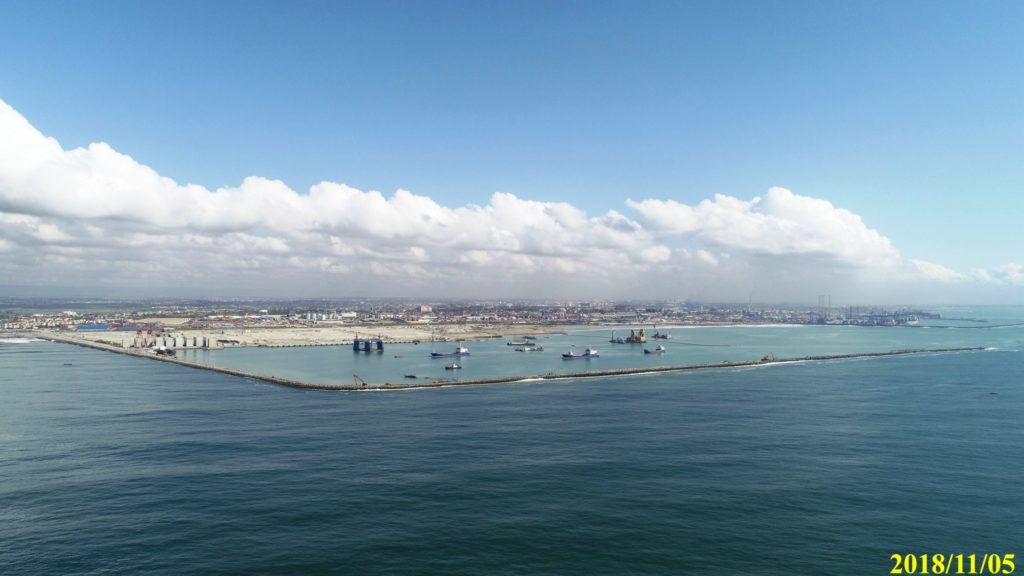
Hauling up to 3.5 million m3 of various size rocks and boulders and placing them on the sea-bed to form the 3,550-metre long breakwater.
Rock core will be placed by split barge until it is high enough to be continued by tipping from land. The core will then be armoured by large stones, carefully placed by crane. Finally, concrete armour units called Accropodes will be placed over the top of the armour rock.
Dredging & Reclamation
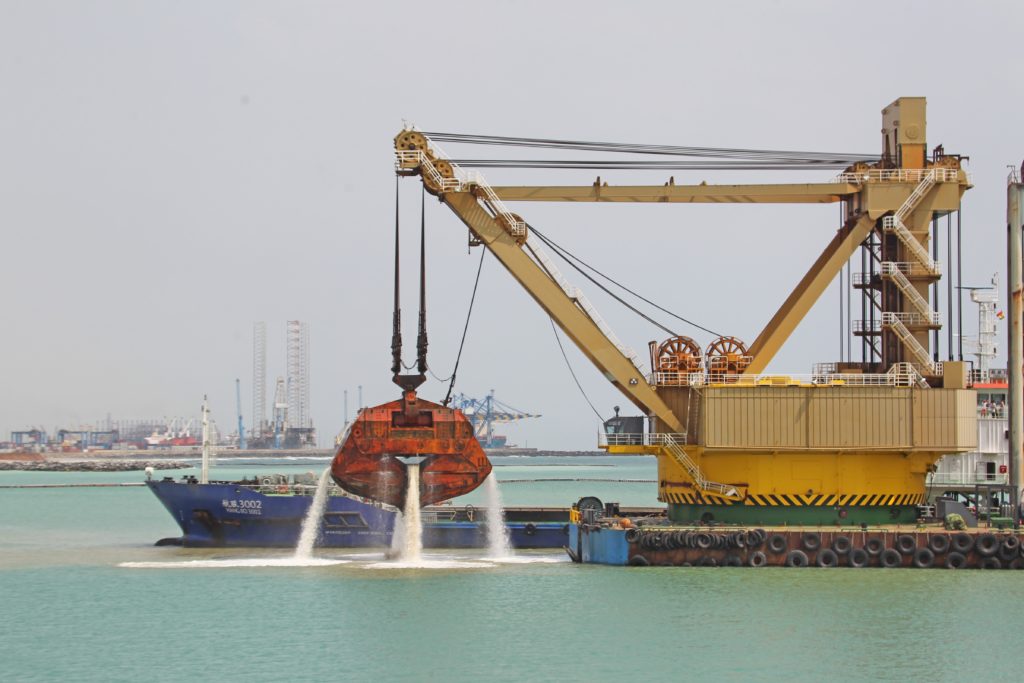
Quay Wall
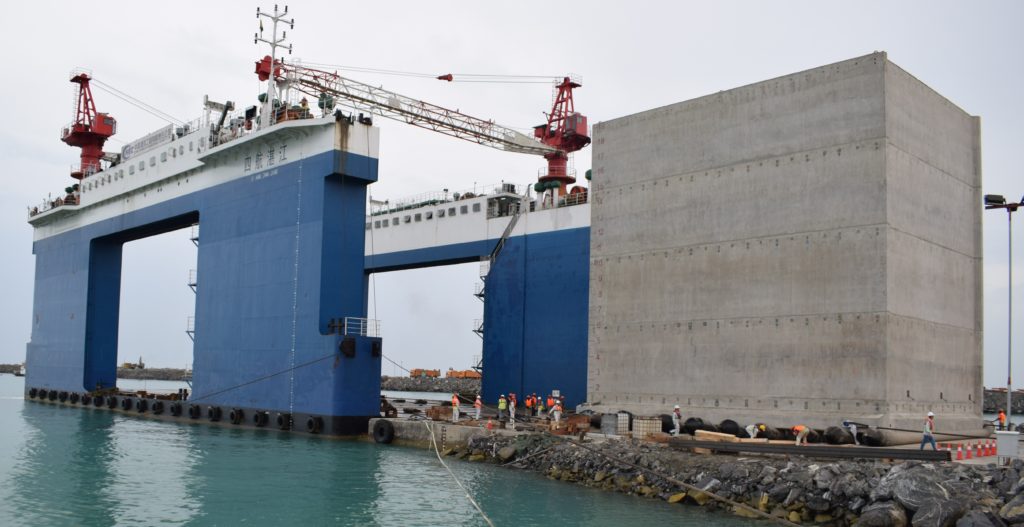
A trench to receive the 74 caissons is dredged from the seabed 19m deep.
The caissons are cast on land with each completed unit using 1000 cubic metres of concrete.
The caissons weigh 2600 tonnes each and are moved onto a floating dock by rolling them on inflatable airbags.
Once on the floating dock, they are moved near to the quay wall location, and the floating dock is sunk allowing the caissons to float.
Tugs move the caissons into the required position and they are deliberately filled with water to sink them.
The caissons are filled with sand and the deck of the quay cast on top.
Buildings & Facilities
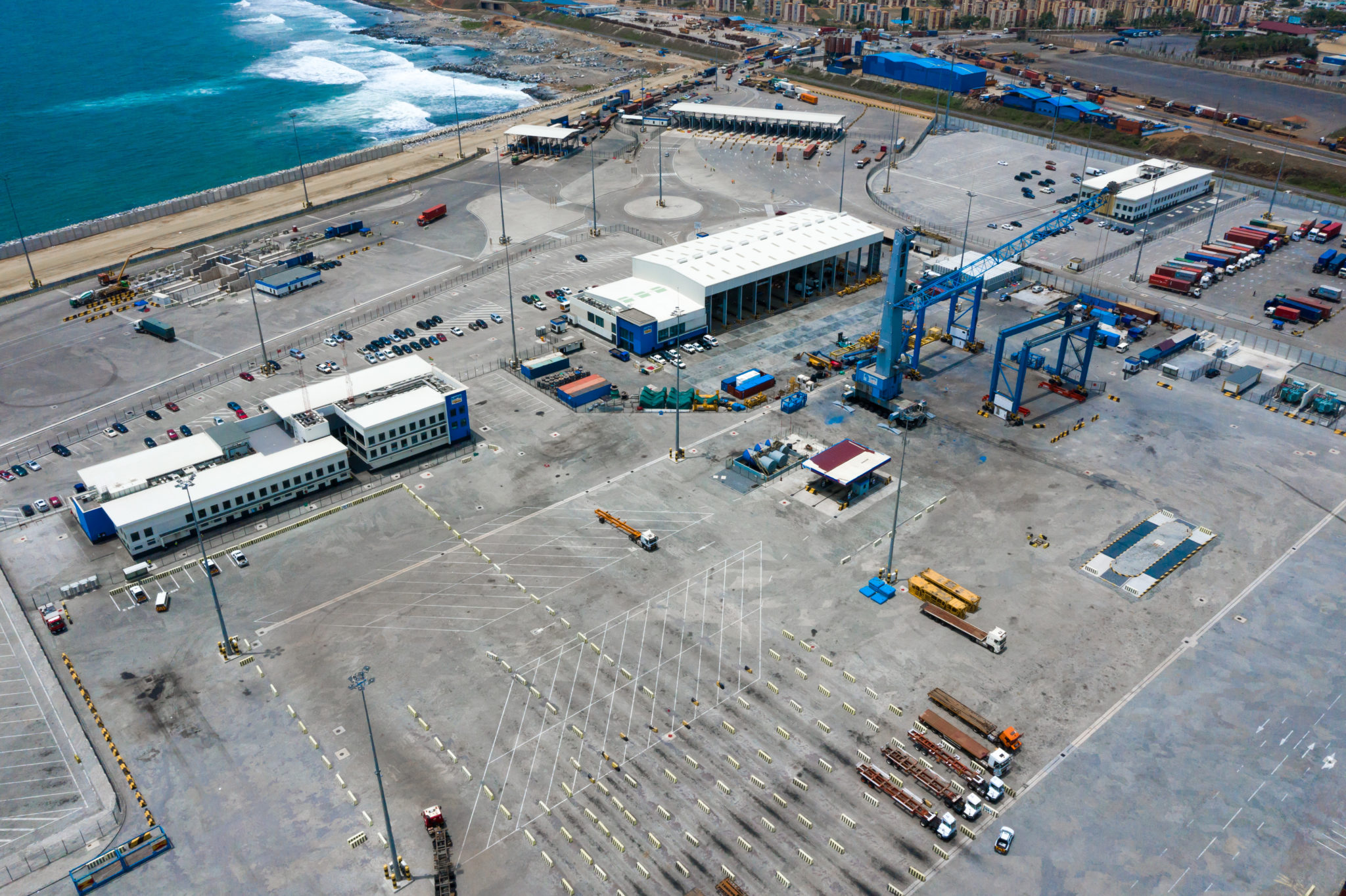
There are three major buildings.
- Office for the Authorities and all the supporting services.
- Office for MPS from which the port is managed,
- Workshop for the maintenance and repair of equipment.
In addition, a number of structures will be constructed such as gates, a self-contained power station and other utility buildings.
The new harbour facility will be totally paved to enhance the use of the container terminal. The first phase will be 60 ha and 84 ha when completed.
The new facility will also include considerable common user areas (buildings & facilities) for the staging, inspection and delivery of containers. The first phase will be 32 ha and 37 ha when completed.
Cranes & Equipment
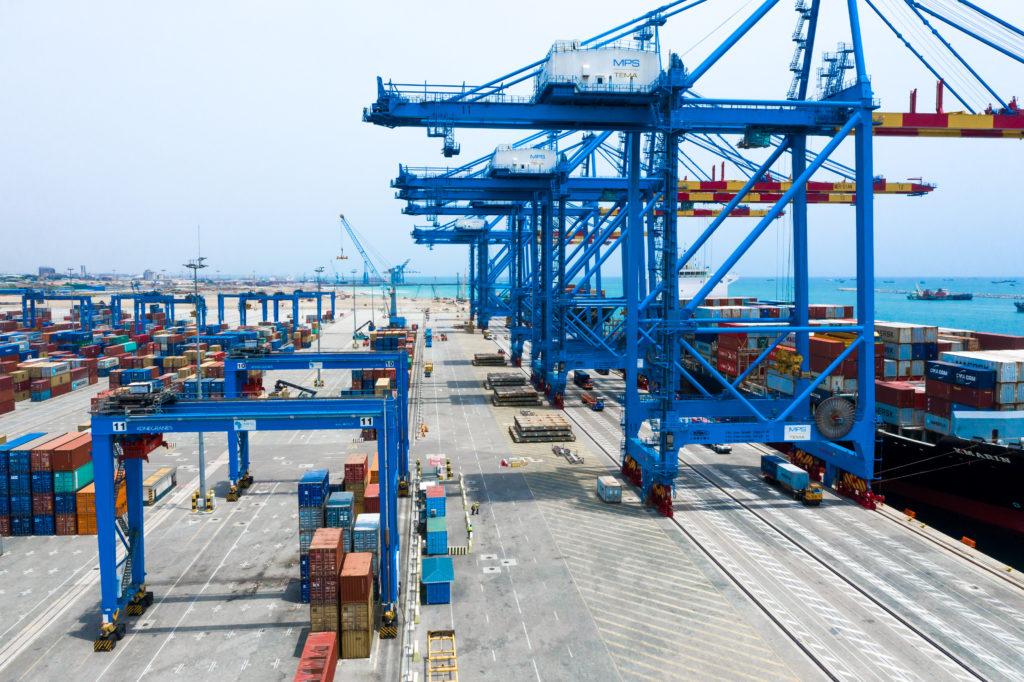
The new facility will receive a much larger fleet of cranes including Ship-To-Shore gantry cranes (Super Post Panamax 23 outreach and 10 on deck) on the waterfront and the latest Electric Rubber Tyre Gantries (7 wide and 1 over 5 high) in the container yards.
Local Content
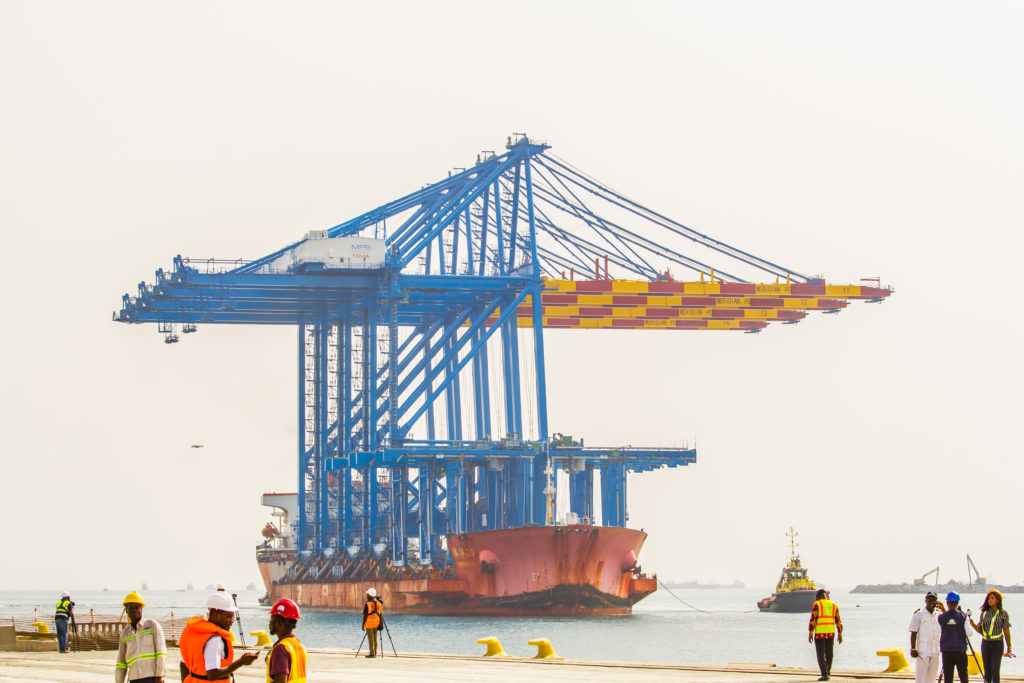
For the local suppliers and contractors, it is worthy to note that 95% of the materials for the works will be locally procured. Also, other than the sophisticated container gantry cranes, a significant quantity of plant will be sourced from the local market.
During the marine construction over 1,000 local skilled Ghanaian Managers, Engineers and craftsmen will be employed. It is also estimated that 90% of the port facility’s civil works and building construction will be manned by Ghanaians. Many local subcontractors will also be involved in the works.
This investment will bring a host of upgrades within the Technical and Information Systems teams, which is a huge boost to the Ghanaian talent pool.
This transfer of knowledge to Ghanaians will secure the future for the generations to come and it is a clear display of what a truly successful partnership with strategic investors can achieve for a determined company and people.
